Exploring the world of coffee is like embarking on a grand tour of global culture and tradition. Each type of coffee drink reflects a story, from the meticulously layered Italian espresso to the bold and spicy Mexican Coffee. Every sip offers a window into the complexities of flavor and the craft of coffee making.
Our ultimate guide is designed to navigate you through this diverse landscape, elucidating the different types of coffee drinks and how each is created and savored.
Whether it's the smooth and rich texture of a Flat White or the refreshing kick from an Iced Coffee, coffee presents a remarkable array of tastes to suit every palate. Our guide also pours attention into the beans themselves, distinguishing between the fruity notes of Arabica and the strong, earthy tones of Robusta.
As your trusted source from MajestyCoffee.com, we're here to share our expertise, making sure that you not only recognize but also appreciate the nuanced differences across coffee types.
Espresso-Based Drinks
Americano
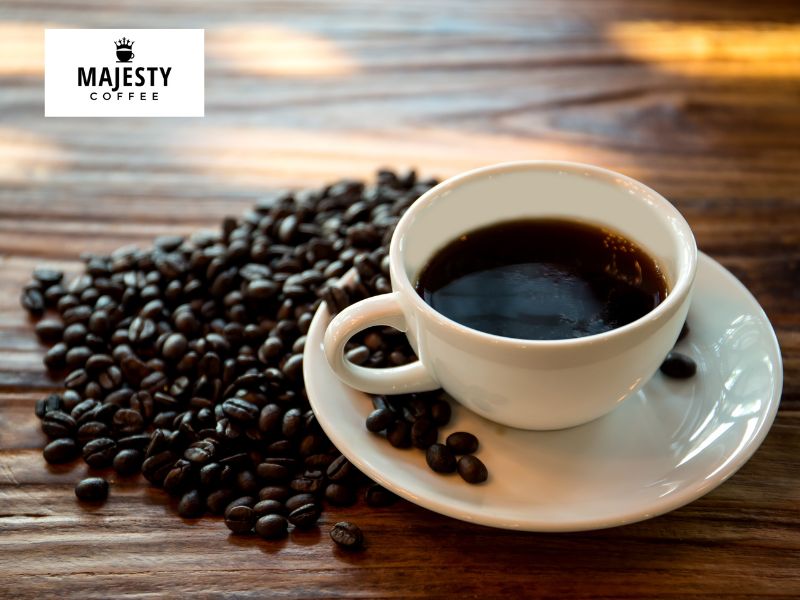
An Americano is a delightful coffee drink that we often recommend for those who enjoy their coffee strong but also a little milder than a straight espresso. Let's talk about how you get from beans to this classic drink.
To make an Americano, we begin with a shot of espresso. Espresso is a concentrated coffee that's made by forcing hot water through finely-ground coffee beans. It's intense in flavor and has a creamy layer on top, known as 'crema'.
Now, the Americano comes into play when we add hot water into that shot of espresso. It's generally made with one part espresso to two parts water; however, the beauty of an Americano is that you can adjust the strength to suit your taste.
Just add more water for a lighter cup or less for a stronger one.
-
Ingredients
- 1 part espresso
- 2 parts hot water
The name "Americano" is believed to come from American WWII soldiers in Italy, who added water to their espresso to mimic the coffee back home.
-
Flavor Profile of an Americano
- Strength: Can be adjusted with water
- Body: Lighter than espresso, but with the same rich flavor
- Acidity: Milder than espresso
An Americano's taste is robust and full-flavored, similar to the espresso it's based on, but it's a tad diluted which makes it more palatable if you're not used to the strong taste of espresso.
It's both refreshing and satisfying, with a clean finish that has endeared it to coffee lovers worldwide.
Caffè Macchiato
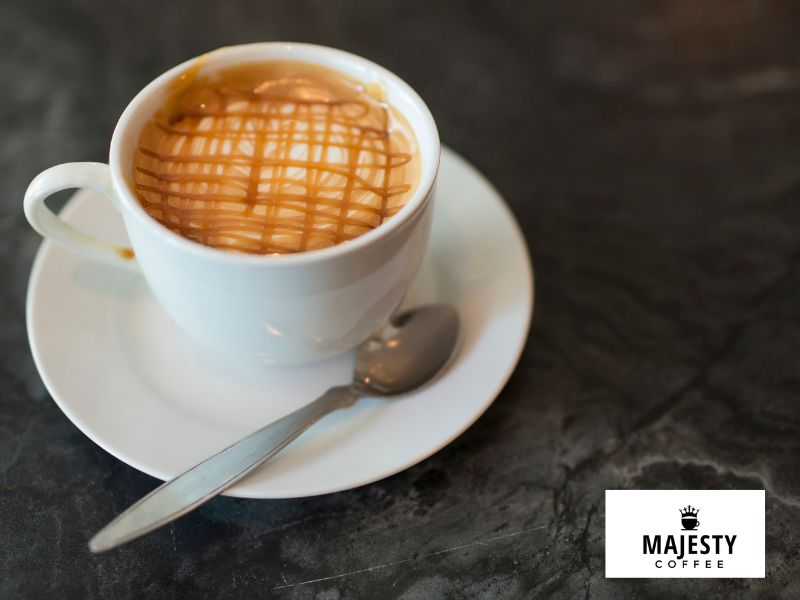
Coffee lovers, let's talk about the classic Caffè Macchiato. It's one of the tastiest espresso drinks around.
In Italian, 'macchiato' means 'stained' or 'spotted'. This is a hint about how we make it.
We start with a base of strong espresso and just add a little spot of milk foam.
Here's what we do to make a perfect Caffè Macchiato:
- Brew a shot of espresso – This is the rich coffee foundation.
- Steam a small amount of milk – Just enough to make a bit of foam.
- Spoon a dollop of milk foam onto the espresso – This 'stains' the coffee, and there you have it!
A Caffè Macchiato is really simple but oh so good. The flavor is bold like straight espresso but with a creamy touch from the foam.
It's a quick energy boost and won't fill you up too much – perfect for a mid-morning pick-me-up.
Now if you're in a rush or just want a small drink that packs a punch, a Caffè Macchiato hits the spot.
Espresso lovers, remember: Macchiato is one of many espresso variations, but it's unique with its little 'spot' of something special. When you want that espresso strength with a hint of smoothness, macchiato is the way to go!
Cappuccino
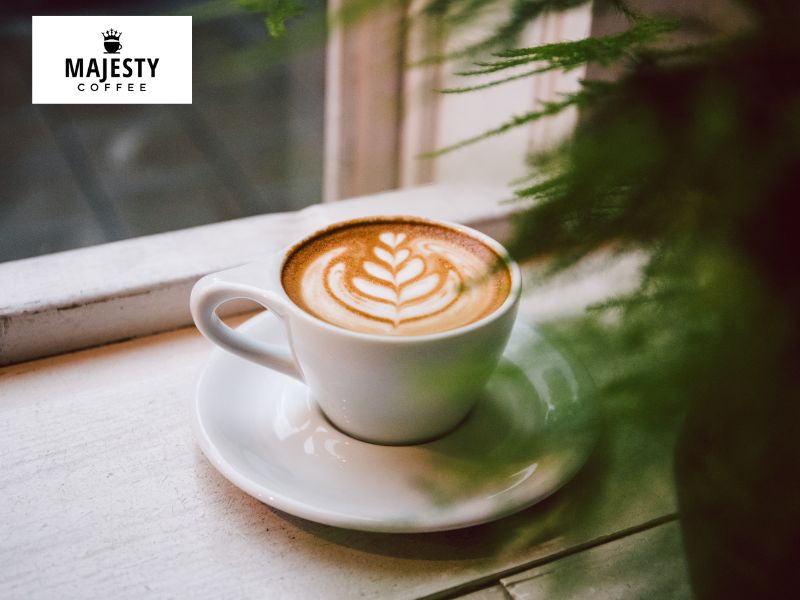
Cappuccino is a beloved Italian coffee that's all about balance and texture. We use espresso as a strong coffee base, which gives this drink its rich and robust flavor.
Then, we add steamed milk to soften the espresso's intensity and bring a creaminess to the cup. On top, a layer of milk foam adds a silky, frothy texture that many coffee lovers crave.
How We Make It:
- Brew Espresso: Start with a high-quality espresso shot.
- Steam the Milk: Heat the milk until it's hot and creamy.
- Froth the Milk: Create light, airy foam from some of the steamed milk.
- Layer: Pour the steamed milk over the espresso, then spoon the froth on top.
The ideal cappuccino has equal parts of espresso, steamed milk, and milk foam. This creates a perfect harmony between the coffee's strength and the milk's smoothness.
The Flavor Profile:
A cappuccino has a strong coffee flavor due to the espresso, but it's also creamy and rich because of the steamed milk.
The froth on the top makes the first sips feel light before the depth of the coffee hits your palate.
In Italy, it's commonly enjoyed in the mornings, and the frothy texture has become its signature.
Remember, we all adore a good cappuccino for its taste, warmth, and beautiful layers. It's a classic that never goes out of style in our coffee-loving hearts.
Cortado

Cortado comes from the Spanish verb "cortar," meaning to cut. In our terms, that means cutting through the strong taste of espresso with warm milk.
Here's how we make it. We take a shot of espresso and mix it with an equal amount of warm milk to reduce the acidity.
The result? A lovely, smooth coffee whose taste is carefully balanced to give your palate a gentle nudge rather than a sharp jolt.
The flavor profile of a cortado is unique. We find a beautiful harmony between the bitterness of espresso and the soothing creaminess of milk. It’s not too milky, nor is it too harsh. It’s just right for those who love the taste of coffee but crave a smoother sip.
Here’s what you need to know about a cortado:
- Origin: Spanish, popular in Spain and Portugal
- Espresso: It’s the star, with a full shot
- Milk: Equal part to espresso, lightly steamed but not frothy
- Balance: Known for a perfect coffee-to-milk ratio
- Glass: Often served in a small, clear glass to admire the layers
A cortado is enjoyed widely, but particularly in the afternoon when you're looking for that midpoint of the day—a comforting cup as you transition from a busy morning to a relaxing evening.
Remember, the beauty of a cortado is in its simplicity and its testament to the perfect balance coffee and milk can achieve.
Espresso
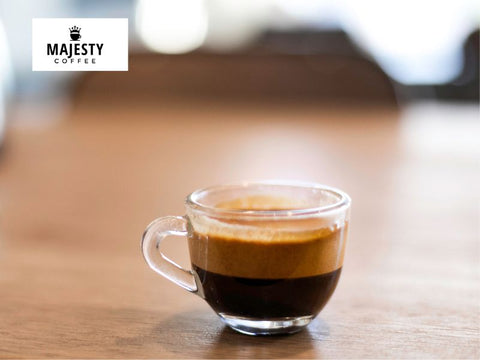
When we think about traditional Italian coffee, espresso is usually the first thing that comes to mind. An espresso is a concentrated form of coffee, served in shots for that quick and powerful flavor punch. Here's how we make it:
- Start with about six to eight grams of finely ground coffee.
- Using an espresso machine, we force hot water through the grounds.
- This process is quick, taking about 25 to 30 seconds.
Because of this method, the flavor of an espresso is typically bold and robust, with a slight natural sweetness and a hint of bitterness.
Espresso is not just a drink, but a brewing method that's become a cornerstone for many other coffee drinks.
The golden layer on top of a shot, called the crema, is the hallmark of a well-extracted espresso and contributes to its full flavor and aromatic experience.
Here's a simple outline of an espresso's profile:
- Preparation: Espresso machine
- Coffee: Finely ground
- Water: Hot, under high pressure
- Crema: Golden, creamy layer
- Flavor: Bold, rich, with a balance of sweetness and bitterness
Flat White
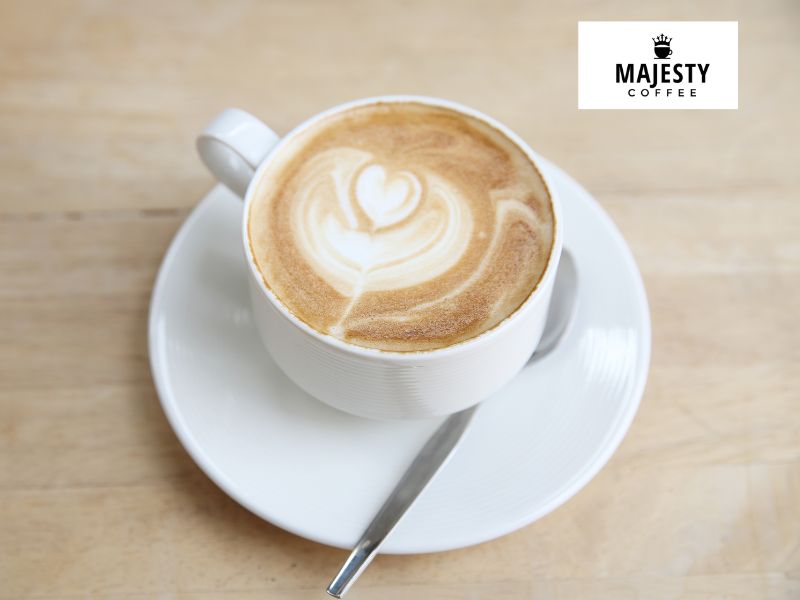
We often hear our friends from Australia and New Zealand raving about the flat white, and there's a good reason for it.
When we make a flat white, we start with a double shot of espresso. This forms the strong coffee base that gives the flat white its deep flavor.
Next, we pour steamed milk over it.
Now, this isn't just any steamed milk; it's microfoam. The milk is steamed until it's silky and has tiny bubbles, which makes our flat white smooth.
- Espresso: A rich and concentrated coffee shot.
- Steamed Milk: Milk heated and textured with steam for silkiness.
- Microfoam: Milk with fine, velvety bubbles.
Here's what sets the flat white apart in our world of coffee:
- Less Milk: It's not as milky as a latte, meaning we can taste more coffee.
- Silky Texture: The microfoam makes the coffee creamy without being too frothy.
- Strong in Flavor: Because it's based on espresso, the flat white has a robust taste.
In short, when you're sipping on a flat white, you're enjoying a creamy yet strong coffee that pays homage to the laid-back coffee culture of our mates down under.

Galao is a delightful Portuguese coffee drink that's similar to a latte. It's made by combining espresso with a generous amount of foamed milk.
We like to think of it as a cozy comfort in a cup, often light and sweet to the taste.
Here’s how we make a Galao:
- Start with a shot of rich espresso.
- Heat milk until it's steaming but not boiling.
- Froth the heated milk to create a creamy texture.
- Pour the espresso into a tall glass and follow it with the frothed milk.
- The milk-to-coffee ratio is typically around 1:3, making it a milky beverage.
The flavor profile of a galao is creamy with a coffee essence that's not too overpowering. If you're in the mood for something sweet, just add a bit of sugar or honey to the mix.
To enjoy a Galao the way it’s meant to be, remember that the key is balance. The espresso should be strong to assert its presence, but the foamed milk softens the coffee's kick, resulting in a harmonious cup that's both comforting and energizing.
Latte

A latte is a beloved coffee drink that’s smooth and creamy. It’s an Italian classic that has become a morning favorite around the world.
At its heart, a latte is made with two main ingredients: espresso and steamed milk.
- Espresso: This is the very essence of the drink. It’s a strong, concentrated coffee that’s bold in flavor.
- Steamed Milk: We add this to espresso to create the latte's signature creamy texture.
When making a latte, the milk-to-coffee ratio is really important. We typically use a lot more milk than coffee, usually around three parts milk to one part espresso. Here's what we do:
- Brew a shot of espresso.
- Heat the milk until it's steaming and has a bit of foam.
- Pour the hot milk into the espresso, holding back the foam with a spoon.
- Top with a thin layer of milk foam.
Optional: For those who like it sweet, add a flavor like vanilla or caramel!
The milk foam isn't just for show; it gives a lovely, soft texture that mixes delightfully with the rich espresso. Plus, it’s the perfect canvas for coffee art. That's where we get creative and make designs on top of the latte.
Lattes are usually enjoyed during Italian breakfast times, but they’ve become an all-day drink in many places.
Remember, the beauty of a latte is in its simplicity: good espresso, well-steamed milk, and just the right touch of foam create something really special.
Lungo
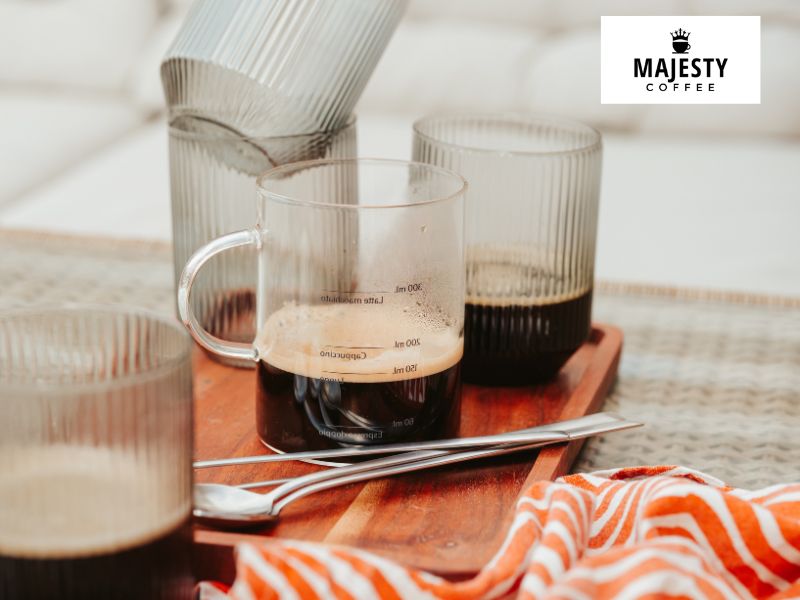
When we talk about Italian coffee, Lungo is a term you'll hear quite often. It's an espresso variation that means "long" in Italian. Lungo is similar to a regular espresso, but it's made with more water. Here's what sets it apart:
- Espresso: A typical espresso has a bold taste and concentrated form.
- More Water: With a Lungo, we add about twice as much water as an espresso. This changes the flavor.
Making a Lungo is simple:
- Start with the same amount of ground coffee as for an espresso.
- Use your espresso machine to push more hot water through the coffee grounds.
Because we use more water, the Lungo has a less intense taste than espresso. It's not as strong, so you'll taste different notes in the coffee.
These are the main points about Lungo:
- Coffee Strength: Milder than espresso, but with more volume.
- Espresso Variation: It’s like a stretched-out espresso.
- Italian Coffee: Yes, Lungo is a traditional Italian coffee.
We think of Lungo as a way to enjoy the espresso experience for a bit longer. If you love the ritual of sipping coffee, Lungo might be your new favorite.
Ristretto
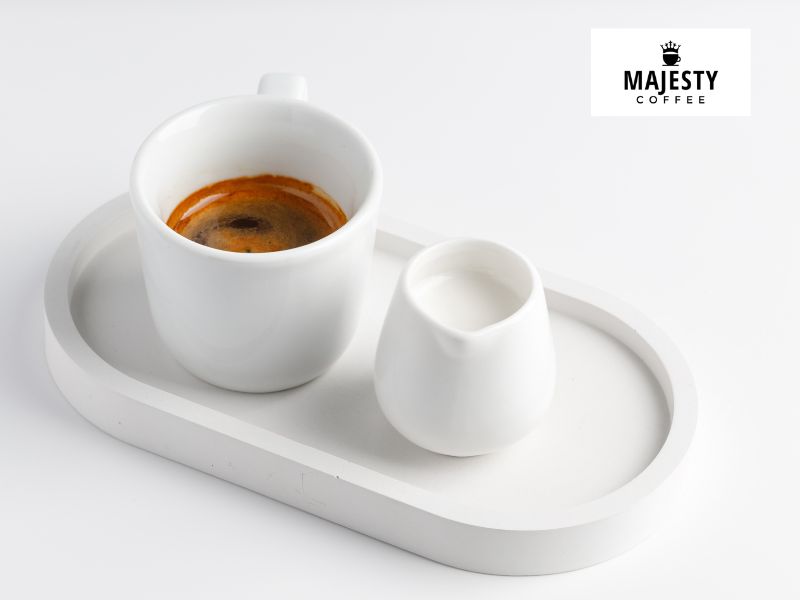
When we make a Ristretto, we take espresso to a whole other level. It’s like our strong espresso's close cousin, but even more intense. Here's how we craft it:
- Finely ground coffee: We use the same espresso beans, but grind them even finer.
- Less water: Unlike regular espresso, we only push a small amount of water through the grounds.
This method makes a Ristretto strong and concentrated. It's all about keeping the water to coffee ground ratio tight.
Expect about 15 grams of an intense coffee kick from 7-8 grams of grounds. That's half the amount of water used for a standard espresso shot!
The flavor of a Ristretto is bold, deep and to the point – it's all about giving you a pure coffee taste without bitterness.
Thanks to our Italian friends, we have this delightful variation that packs a punch in a small dose.
Here’s a quick breakdown of what sets a Ristretto apart:
- Origin: hailing from Italy, this drink shows our respect for coffee tradition.
- Flavor Profile: it's a spotlight on the coffee’s core flavors.
- Volume: served in a small cup, much like an espresso, but it’s a shorter shot.
And that, friends, is the mighty Ristretto for you. It's a simple way we pay homage to the essence of espresso, with a twist that coffee aficionados treasure.
- Espresso: The foundation for many coffee drinks, it's a concentrated shot of coffee.
- Doppio: A double shot of espresso.
- Long Black: Similar to an Americano, but prepared differently to preserve the crema.
- Galao: Similar to a latte, but with a higher ratio of foamed milk to coffee, from Portugal.
Cold Coffee Drinks
Cold Brew
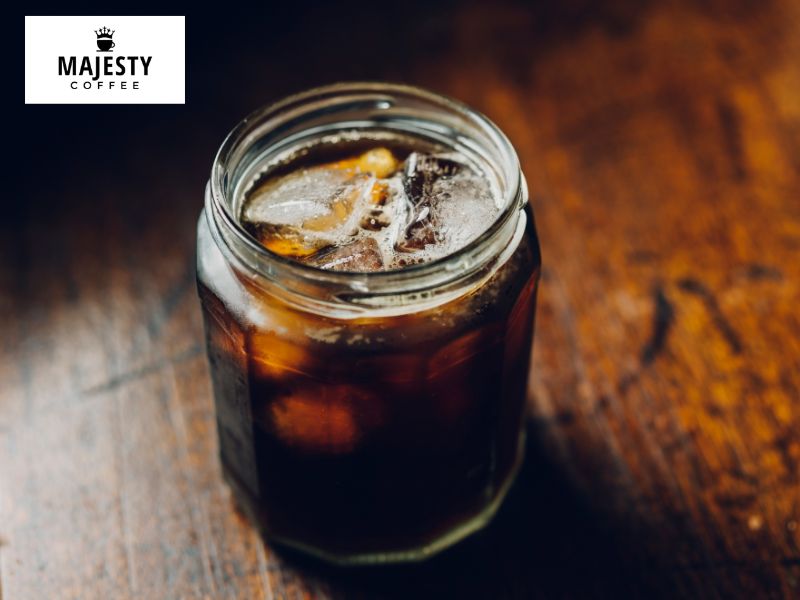
When we talk about Cold Brew, we're referring to a coffee brewing method that mixes ground coffee and cold water. It's a perfect summer drink because it's served with ice and has a smooth, mild flavor profile that we all enjoy on a hot day.
Let's break down how we make it and what makes it unique.
To start a cold brew, we steep coarse ground coffee in cold water for an extended period, typically about 12 to 24 hours.
Here’s a simple breakdown:
- Coarse Ground Coffee: Collect medium to coarse ground coffee. A larger grind size prevents over-extraction.
- Cold Water: Use cold, clean water to start the process.
- Brewing Time: Allow it to steep for 12 to 24 hours, depending on your taste preference.
- Extraction Process: This slow extraction process reduces the bitterness and coffee acidity, enhancing the sweet notes.
After steeping, we strain the coffee to remove the grounds. What's left is a concentrated coffee that we can dilute with water or milk.
Here's why we love cold brew:
- Flavor: It’s notably smoother and sweeter than traditional hot-brewed coffee.
- Acidity: A lower level of acidity makes it easier on your stomach.
And because it's concentrated, cold brew remains robust even when ice is added, so it won't get watered down. Serve it over ice, and what you have is a refreshing coffee drink perfect for those long summer days.
Frappuccino

What is a Frappuccino?
A Frappuccino is a tasty blend of coffee or crème base mixed with ice and flavored syrup. It's a type of blended coffee drink made popular by Starbucks. When we create a Frappuccino, it's all about mixing the right ingredients to make a cool, refreshing treat that's perfect for summer or whenever you need a sweet pick-me-up.
How It's Made:
Here's what goes into making a delicious Frappuccino:
- Coffee or Crème Base: We start with a base that can be either coffee for that espresso kick or a milk crème for a non-coffee version.
- Ice: Then, we add ice to give it that frosty texture.
- Flavored Syrup: Depending on what flavor you're in the mood for, we blend in sweet syrup like vanilla, caramel, or chocolate.
- Whipped Cream: To top it off, we garnish our Frappuccino with a generous dollop of whipped cream.
Flavor Profile:
Frappuccinos come in a variety of flavors and the taste can range from bold coffee to sweet, creamy concoctions.
The coffee-based ones have a rich, robust flavor that's softened by the added flavors and whipped cream.
On the other hand, the crème-based versions highlight the flavors of the syrup and have a smooth, milkshake-like quality.
Iced Coffee
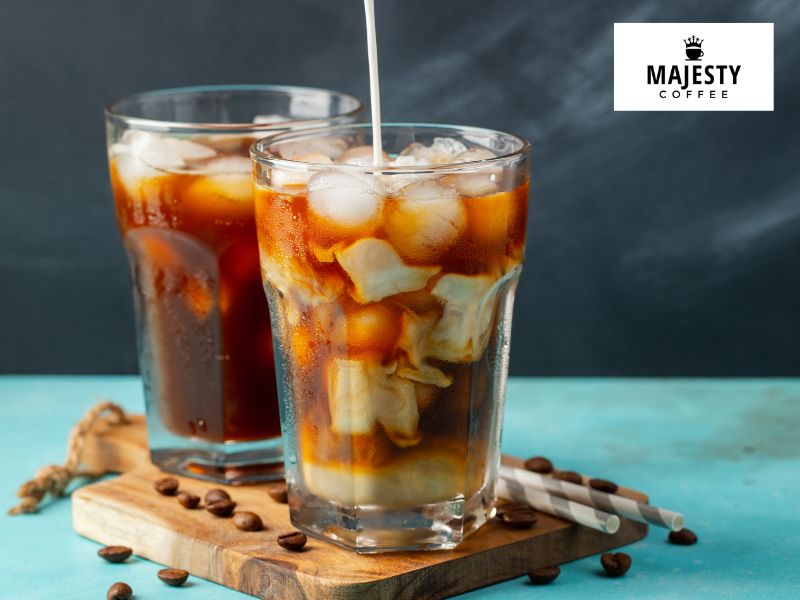
In the warm months, many of us look forward to sipping a cool, refreshing cup of iced coffee. It's one of our favorite summer beverages that's not only cooling but also packs the lively punch of coffee we love.
When we make iced coffee, we start with our usual brewing methods. We can use a regular drip coffee maker, a pour-over, or even a French press.
The key is to brew the coffee stronger than usual because the ice can dilute the coffee's flavor. Once brewed, we let it cool a bit before we pour it over ice.
Now, let's chat about the cooling techniques.
Some prefer to brew it the night before and store it in the fridge, this allows the coffee to cool gradually, maintaining a balanced and smoother taste. Others might pour hot coffee over ice for a quick chill.
Here’s a simple list on how we like to jazz up our iced coffee:
- Add milk or cream: For a silkier texture and taste.
- Sweeten it up: With sugar, honey, or our favorite syrup.
- Flavor infusions: Vanilla or caramel can make it extra tasty.
Remember, you can adjust the amounts of milk or sugar to suit your taste.
Some folks enjoy their iced coffee black, reveling in the robust and straightforward flavor of the coffee itself against the cooling backdrop of the ice.
Whether you're making an iced macchiato with layers of milk and espresso or a simple black iced coffee, there's a chilled brew for every one of us to enjoy.
Let's embrace the simplicity of iced coffee and enjoy its straightforward, honest flavor as a perfect pick-me-up during our summer days.
- Frappuccino: A sweet, blended coffee drink with ice and other flavorings.
- Mazagran: A cold coffee drink from Algeria, often flavored with lemon.
Specialty and Flavored Coffees
Affogato

The Affogato is a classic Italian treat that we love for its simplicity and rich flavor. It combines two of our favorites: a strong shot of espresso and a scoop of smooth vanilla ice cream or gelato.
Here’s how we make this delightful coffee dessert:
- Espresso: This strong coffee is made by forcing hot water through finely-ground coffee beans. It's known for its concentrated flavor and forms the base of our affogato.
- Vanilla Ice Cream or Gelato: We prefer to use creamy gelato because it's denser and melts slower, but regular vanilla ice cream works great too!
To make an affogato, follow these steps:
- Chill your glass or bowl to keep the dessert cold for longer.
- Scoop up a generous amount of cold vanilla gelato or ice cream into the chilled dish.
- Pour a hot shot of espresso over the gelato just before serving.
When the hot espresso meets the cold gelato, it creates a creamy, dreamy coffee-infused dessert.
The flavor profile is a balance of sweet and bold, blending the rich taste of the espresso with the creaminess of the gelato.
It’s not a drink to be sipped, but a dessert to be savored. Each spoonful offers a mix of warm and cold that's simply irresistible.
Here’s what we love about it:
- It’s a quick and easy dessert.
- The flavors are incredibly complementary.
- It gives you that lovely caffeine kick with dessert.
Enjoy your affogato after a meal or as a sweet treat any time of the day!
Bulletproof Coffee
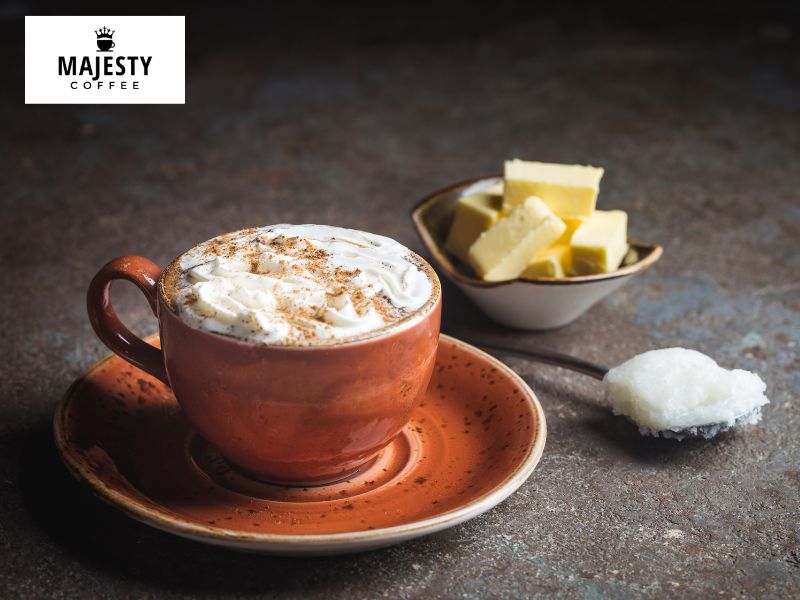
Have you ever heard of Bulletproof Coffee? It's a drink that's become quite popular, especially among people who follow a ketogenic diet.
This unique coffee mix is known for giving you a smooth energy boost and can sometimes serve as a meal replacement.
So, what goes into Bulletproof Coffee? Here's the recipe:
- Start with your favorite coffee. Brew it just how you like it.
- Add 1-2 tablespoons of Grass-Fed Ghee. This is butter from cows that eat only grass, which is thought to be healthier.
- Then, blend in 1-2 tablespoons of Brain Octane C8 MCT Oil. MCT stands for medium-chain triglycerides, which are fats that are good for energy.
Mix these ingredients until the coffee looks creamy and frothy.
Now, why do we like this drink? Because it's not just coffee; it adds extra benefits:
- Grass-fed butter: This isn't your usual butter. It is rich and it's got good fats that can make you feel full and satisfied.
- MCT oil: This oil is a type of fat that your body can turn into energy really fast. It's like a quick fuel for your brain!
Drinking Bulletproof Coffee might feel different than your regular cup. It's creamy, rich, and might taste a bit like a latte, but with a different kind of richness from the butter and MCT oil.
Caffè Mocha

If you love chocolate and coffee, then Caffè Mocha is your go-to coffee drink. We often describe it as a chocolate lover's delight because it blends rich espresso with sweet chocolate and creamy milk. It's like a warm hug in a cup!
Here's what goes into a Caffè Mocha:
- Espresso: This is the coffee base. It's a strong, concentrated coffee that's made by pushing hot water through finely-ground coffee beans.
- Chocolate: Usually in the form of syrup or powder, it adds the sweet, cocoa flavor that makes this drink special.
- Steamed Milk: Adds smoothness and balances out the flavors.
We make a Caffè Mocha like this:
- Pour the chocolate into a cup.
- Brew a shot of espresso and add it to the chocolate.
- Mix them well.
- Top up with steamed milk.
Sometimes, we also add whipped cream or chocolate shavings on top for an extra treat.
The flavor is a wonderful mix of bitter espresso with the sweetness of chocolate and milk. It's like having your favorite dessert in a coffee cup!
This drink is one of the many tasty variations of espresso that has won hearts around the world.
It's perfect for when you want something a little more indulgent than your regular cup of coffee. Enjoy it as a midday pick-me-up or a delicious end to a meal.
Irish Coffee

Irish Coffee is a beloved warm cocktail that we think combines our two favorite things: coffee and whiskey. Making this drink is simple and enjoyable, perfect for a cozy evening or as a treat after a meal.
Ingredients:
- Black coffee
- Irish whiskey
- Sugar
- Cream
Steps to Make Irish Coffee:
- Start by brewing a strong black coffee.
- Fill a glass or mug with the hot coffee until it's about three-quarters full.
- Add a tablespoon of sugar and stir until fully dissolved.
- Pour in a shot (about 1.5 ounces) of Irish whiskey.
- Gently float the cream on top by pouring it over the back of a spoon so it rests above the coffee and whiskey mix.
Flavor Profile: The taste of Irish Coffee is a sweet and creamy delight with a good kick from the whiskey. The strong black coffee provides a robust base, while the Irish whiskey adds a smooth and warming sensation. Sugar sweetens the mixture, and the cream adds a luxurious finish that contrasts with the hot liquid below.
Irish Coffee isn't just a drink; it's a dessert and a cocktail. In Ireland, it's a traditional drink enjoyed by many. It’s not only warming and comforting but also offers a complex array of tastes that make it a popular choice among coffee variations and dessert cocktails.
When we prepare Irish Coffee, we're indulging in a bit of Irish tradition and giving ourselves a moment to savor the richer things in life.
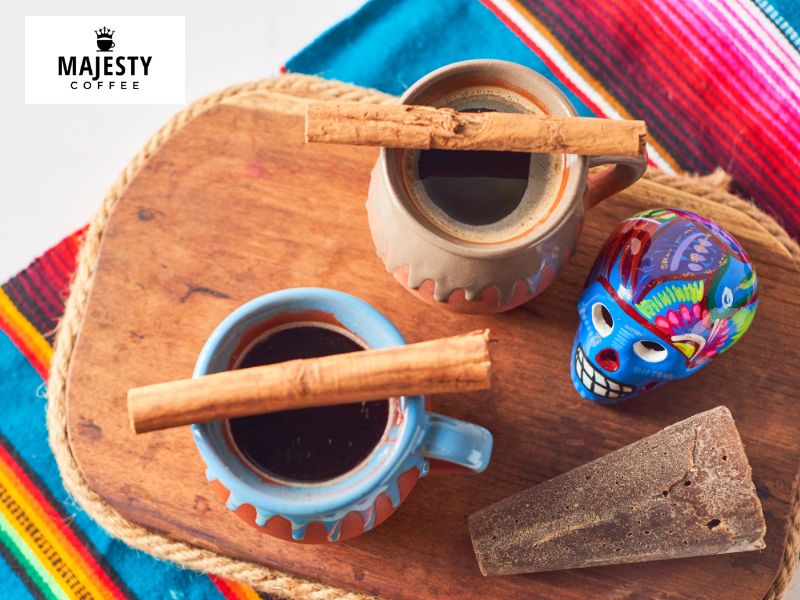
In our passion for all types of coffee, we can't overlook the vibrant and flavorful world of Mexican Coffee. It's a warm hug in a cup, steeped in rich cultural tradition, and we absolutely love it for its unique taste profiles.
Café de Olla: This traditional Mexican coffee is typically brewed in a clay pot, which some say adds to its flavor profile.
To make this, we start with Mexican coffee beans—usually a lighter roast that retains a mild, smooth flavor.
We mix in cinnamon and piloncillo, an unrefined sugar with a molasses-like taste, creating a sweet and slightly spicy drink. Sometimes, we even add a hint of chocolate to introduce a complex depth to the flavor.
How to Make It:
- Combine ground coffee, cinnamon, and piloncillo in a pot.
- Add water and bring to a boil.
- Reduce heat and simmer to let the flavors meld.
- Serve and enjoy the cozy sweetness!
Café de Olla Recipe:
- Coffee: A smooth base with light acidity.
- Cinnamon: Adds a warm, spicy note.
- Piloncillo: Lends a rich, caramel-like sweetness.
- Sometimes a pinch of chocolate: For a luscious twist.
We cherish the balance of sweet and spicy in Mexican Coffee.
With each sip, you get the richness of the beans complemented by the boldness of cinnamon and the comforting sweetness of piloncillo.
Our travels and experience tell us that it's not just a beverage; it's a sip of Mexican culture.
Whether it's in the morning or as an after-dinner treat, Mexican Coffee brings its lively spirit to any moment.
Enjoying it is like participating in a long-standing cultural tradition—with every cup, we're embracing a piece of Mexico's rich and flavorful heritage.
Turkish Coffee

In our world of coffee drinks, Turkish coffee holds a special place. It's a traditional Middle Eastern beverage that dates back to the 16th century.
When we prepare Turkish coffee, we make it with finely ground coffee, water, and often sugar—and sometimes a hint of cardamom to spice it up.
How we make it:
- Measure: We use 10 grams of finely ground coffee per 100 milliliters of water.
- Heat: Put water in a special pot called a cezve or ibrik and warm it on the stove.
- Mix: Add the coffee—and sugar if you like it sweet—and cardamom if using.
- Boil: We heat it until it starts to foam but not boil over—this may happen two or three times.
- Pour: We immediately pour the coffee into small cups, making sure we split the foam evenly.
Turkish coffee is unique because we don't filter it. The grounds settle at the bottom of the cup.
While sipping, we savor the strong, bold flavor. If we add sugar, the coffee becomes foamier.
It’s customary to serve it with water to cleanse the palate, and perhaps a small sweet treat like Turkish delight.
Remember, patience is key. We wait a bit after pouring to let the grounds settle, ensuring every sip is just right.
Turkish coffee isn't just about the drink—it's about the experience of enjoying a culturally rich and flavor-packed cup.
Traditional and Cultural Coffees
Arabica Coffee
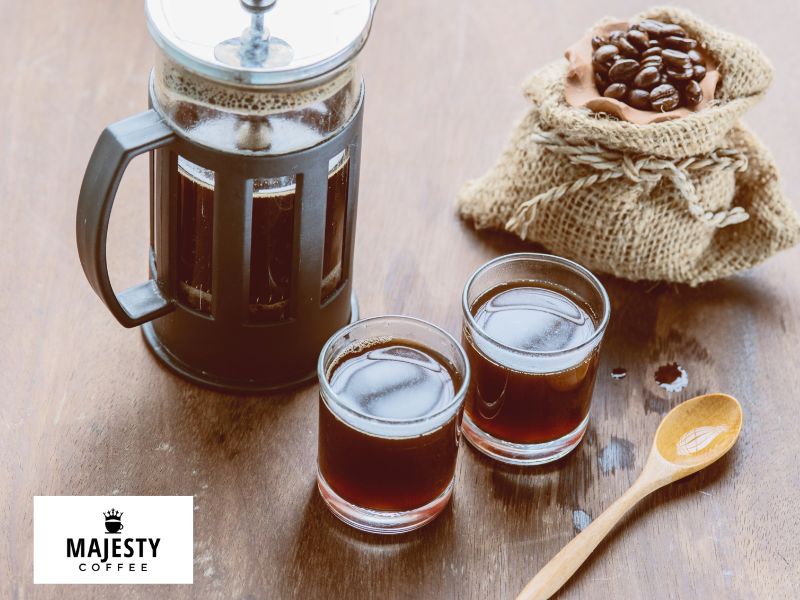
Arabica beans are the most popular coffee species prized for their mild and aromatic qualities. They're often used in our favorite cup of joe and are known for their fruity undertones.
We cherish Arabica beans for their diverse flavor profiles, which can range depending on where they're grown.
When we talk about brewing Arabica, there are many methods we can use:
- Cold Brew: Mix coffee grounds with cold water and refrigerate for 12-18 hours for a smooth taste.
- Pour-Over: Pour hot water over coffee grounds to control the strength and savor the brew's clean taste.
In terms of cultivation, Arabica beans need special attention as they grow best in high altitudes with plenty of shade and steady rain.
It's the care in cultivation that brings out the distinct flavors in every bean.
Let's break down the flavor profile of Arabica coffee:
- Sweetness: Often has a touch of natural sweetness.
- Body: Generally lighter, making for an easy-to-drink experience.
- Acidity: Notably higher, which contributes to the fruity taste.
Arabica coffee offers us a delightful experience with every sip.
Whether we're enjoying a fresh pour-over at home or a cold brew on a hot day, the quality of Arabica beans makes our coffee moments truly special.
- Turkish Coffee: A method of preparing coffee where fine grounds are boiled with water and often sugar.
- Café de Olla: A traditional Mexican coffee made with cinnamon and piloncillo.
- Robusta Coffee: Known for its bold and strong flavor, often used in espresso blends for increased crema and caffeine content.
Robusta Coffee
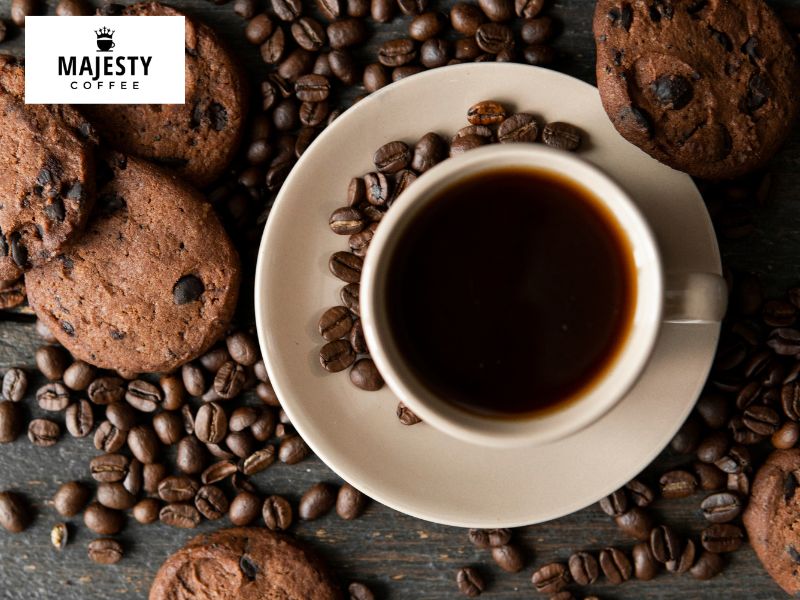
We often find Robusta coffee beans right in the heart of our favorite strong and bold brews. These beans are one of the primary coffee species grown globally, next to their cousin Arabica. Now, let’s talk about what makes Robusta stand out.
Robusta beans are hardy. They thrive at lower altitudes, usually ranging from sea level to about 600 meters.
Countries along the equator, like Vietnam, Indonesia, and West Africa, have the ideal hot and humid climates for these beans to flourish.
In fact, Vietnam is known as the world's largest producer of Robusta.
Why do people drink Robusta?
The flavor profile of Robusta can be described as bold and assertive.
It's typically stronger and more bitter than Arabica, with a grain-like overtone and a nutty aftertaste.
People who enjoy their coffee with a punch tend to gravitate towards Robusta.
Here are a few quick facts about Robusta:
-
Caffeine Content: Robusta beans contain almost double the caffeine of Arabica beans, making them perfect for a serious wake-up call.
-
Brewing methods: You can brew Robusta using various methods – from espresso machines to simple drip brewers. Because of its strong flavor, it holds up well with cream and sugar, too.
Robusta beans are not only about a strong cup though; they're also chosen for their crema in espresso and for blending in Italian-style coffees where a full-bodied element is desired.
Keep in mind, they're less acidic, and their higher caffeine content gives that extra kick needed to start the morning properly.
Coffee with Milk Variations
Café au Lait (Milk)
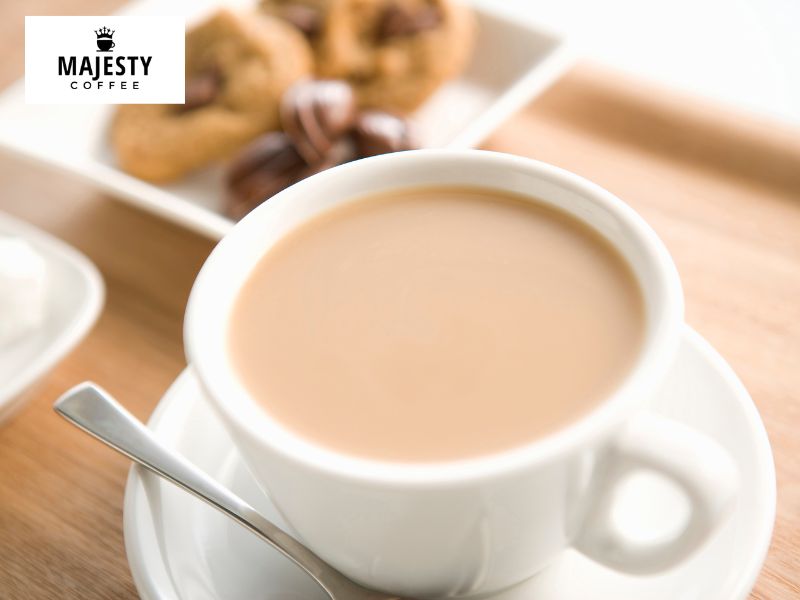
We all love starting our day with a warm cup of coffee. One delightful choice that we often recommend is the Café au Lait. This simple and classic drink is a staple in French breakfast tradition. Now, let's find out what makes a Café au Lait so special.
Ingredients & Preparation:
- Coffee: To make a Café au Lait, we start with strong brewed coffee. The coffee should be rich and full-bodied to balance the milk's creaminess.
- Milk: Equal parts of hot, steamed milk are added to the coffee. We want the milk to be warm and slightly frothy, but not too much. It should blend smoothly with the coffee.
Making a Café au Lait:
- Brew your strong coffee.
- Meanwhile, steam your milk until it's hot and has a bit of froth.
- Pour the steamed milk into your cup of brewed coffee.
Remember, it's all about balance—a 1:1 ratio of coffee to milk. We're looking for harmony between the two, where neither overpowers the other.
Flavor Profile:
A well-made Café au Lait has a creamy texture that complements the coffee's boldness.
By combining milk with robust coffee, the drink has a milder flavor than black coffee but maintains a richness that's both comforting and energizing.
So next time you're thinking of a cozy coffee drink, give Café au Lait a try. It's a delightful part of many people's morning routines, and it just might become yours too!
Doppio

When we're talking about espresso, doppio is a term you'll often hear. It's Italian for "double," and it refers to a double shot of espresso. Here's what you need to know about this strong and beloved Italian coffee classic.
To make a doppio, you take 19-21 grams of ground coffee and use an espresso machine to brew roughly 60 milliliters of coffee. That's basically two shots of espresso combined into one.
Here's the process:
- Grind your coffee beans until they're very fine.
- Tamp the ground coffee into an espresso machine's double handle basket.
- Brew, resulting in a concentrated and flavorful double shot.
Now, let's talk about taste. Doppio has a bold flavor, but it's not just about strength; it's also about depth. Because it's more concentrated, it offers a complex taste that captures the essence of the coffee bean in a small serving size.
In summary, a doppio gives you:
- A strong coffee preference for those who love a more robust cup
- Roughly double the serving size of a single espresso shot
- A deep dive into the coffee’s flavor profile
Remember, drinking a doppio is about enjoying the intensity and richness of coffee in its purest form. It's a favorite among espresso enthusiasts for a reason – each sip brings with it a deep appreciation for the art and science of coffee brewing.




